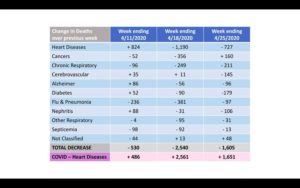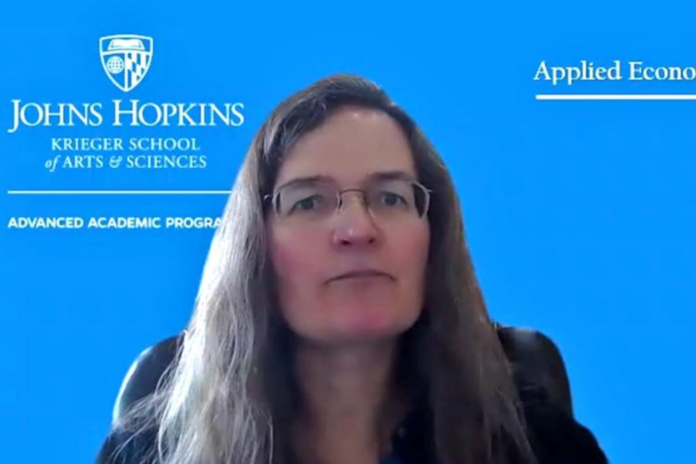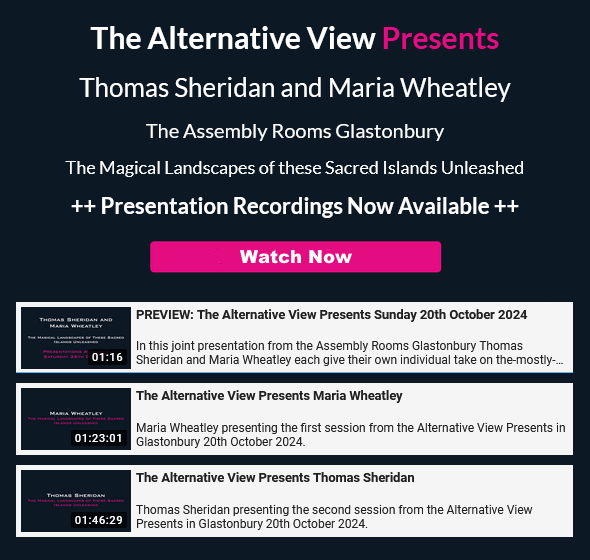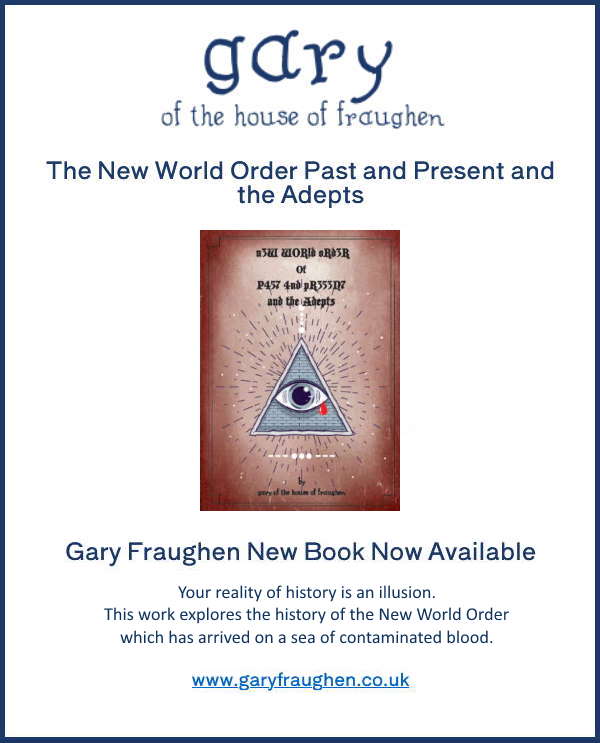Johns Hopkins academic: CDC data shows COVID hasn’t increased US death rate
Sun 4:29 pm +00:00, 29 Nov 2020“The data doesn’t show that older individuals are dying in a higher proportion to total deaths than usual. We also found evidence that Covid 19 death numbers were misleading.”
Using statistical analysis, a senior lecturer from Johns Hopkins University (JHU) has demonstrated that COVID-19 has resulted in no excess deaths, yet the university has censored the article online.
Dr. Genevieve Briand, the “Assistant Director for MS in Applied Economics,” gave a video lecture in which she examined the deaths due to COVID-19 and deaths overall in the U.S.
Her findings were compiled in an article in the JHU newsletter, penned by Yanni Gu, which has since been removed by the university. In a tweet, JHU stated that the article was deleted, because it “was being used to support false and dangerous inaccuracies about the impact of the pandemic. We regret that this article may have contributed to the spread of misinformation about COVID-19.”
In the lecture, using data drawn from the Centers for Disease Control (CDC) website, Briand noted that the deaths of “older people stayed the same before and after COVID-19.” This finding was contrary to expectation: “Since COVID-19 mainly affects the elderly, experts expected an increase in the percentage of deaths in older age groups. However, this increase is not seen from the CDC data. In fact, the percentages of deaths among all age groups remain relatively the same.”
Presenting data from February to September, she noted that each week, before and after the impact of the virus, “an average of over 60,000 individuals die per week. So 50,000 to 70,000 deaths per week is normal, it is to be expected.” The latest weekly report from the CDC notes that in week 46 of 2020, only “1,260” had COVID–19 “listed as an underlying or contributing cause of death.”
Comparing deaths from 2014 to 2020, Briand then demonstrated that whilst the data recorded a slight spike in 2020, there were only 11,292 more deaths than 2018. Thus the COVID spike was found to be consistent with both seasonal and historical trends.
Taking 2018 as an example, Briand pointed out that “the pattern of seasonal increase in the total number of deaths is a result of the rise in deaths by all causes,” with “heart disease, respiratory diseases, influenza and pneumonia” being the three leading causes of death.
Yet when examining 2020’s data in the seasonal period, she found that “COVID-19-related deaths exceeded deaths from heart diseases,” which was unusual, since heart disease “has always prevailed as the leading cause of deaths.”
Comparing the 2020 figures to the corresponding period in 2018, they showed that in 2020, “instead of the expected drastic increase across all causes, there was a significant decrease in deaths due to heart disease. Even more surprising … this sudden decline in deaths is observed for all other causes.”
The JHU newsletter article stated that the “trend is completely contrary to the pattern observed in all previous years.”
It also observes that “the total decrease in deaths by other causes almost exactly equals the increase in deaths by COVID-19.”
Hence, according to Dr. Briand, “the COVID-19 death toll is misleading … deaths due to heart diseases, respiratory diseases, influenza and pneumonia may instead be recategorized as being due to COVID-19.”
In the weeks in April with the highest reported number of deaths, the rise in COVID deaths almost exactly mirrored the decrease in the leading causes of deaths.
-

Graph depicts the total decrease in deaths by various causes, including COVID-19. SOURCE: Courtesy of Genevieve Briand
She concluded with a number of summary statements: “By the CDC’s own account, in this pandemic, deaths of children have been less than in each of the last five flue seasons.”
“For three of the four weeks where COVID-19 deaths, where reported, have been higher than heart disease deaths, the number of deaths due to heart disease, influenza, and pneumonia, chronic respiratory disease and more, decreased,” she added.
“All this points to the reason we have a higher number of reported COVID-19 deaths among older individuals than younger individuals, is simply because every day in the U.S. older individuals die in higher numbers than younger individuals.”
Briand further commented: “The data doesn’t show that older individuals are dying in a higher proportion to total deaths than usual. We also found evidence that COVID-19 death numbers were misleading. We found evidence some deaths caused by diseases of the heart, chronic lower order respiratory diseases, flu and pneumonia, and more, were simply reclassified as COVID-19 deaths.”
The American Institute for Economic Research commented on the finding, saying that the “accounting error regarding Covid deaths … has caused mass hysteria and misinformed public policy. Closing down communities to fight a virus that according to the data, has had no significant contribution to total deaths, reduces our overall capacity to build a healthy society.”
“All of this points to no evidence that COVID-19 created any excess deaths. Total death numbers are not above normal death numbers. We found no evidence to the contrary,” Dr. Briand concluded.
https://alphanewsmn.com/johns-hopkins-academic-cdc-data-shows-covid-hasnt-increased-us-death-rate/














